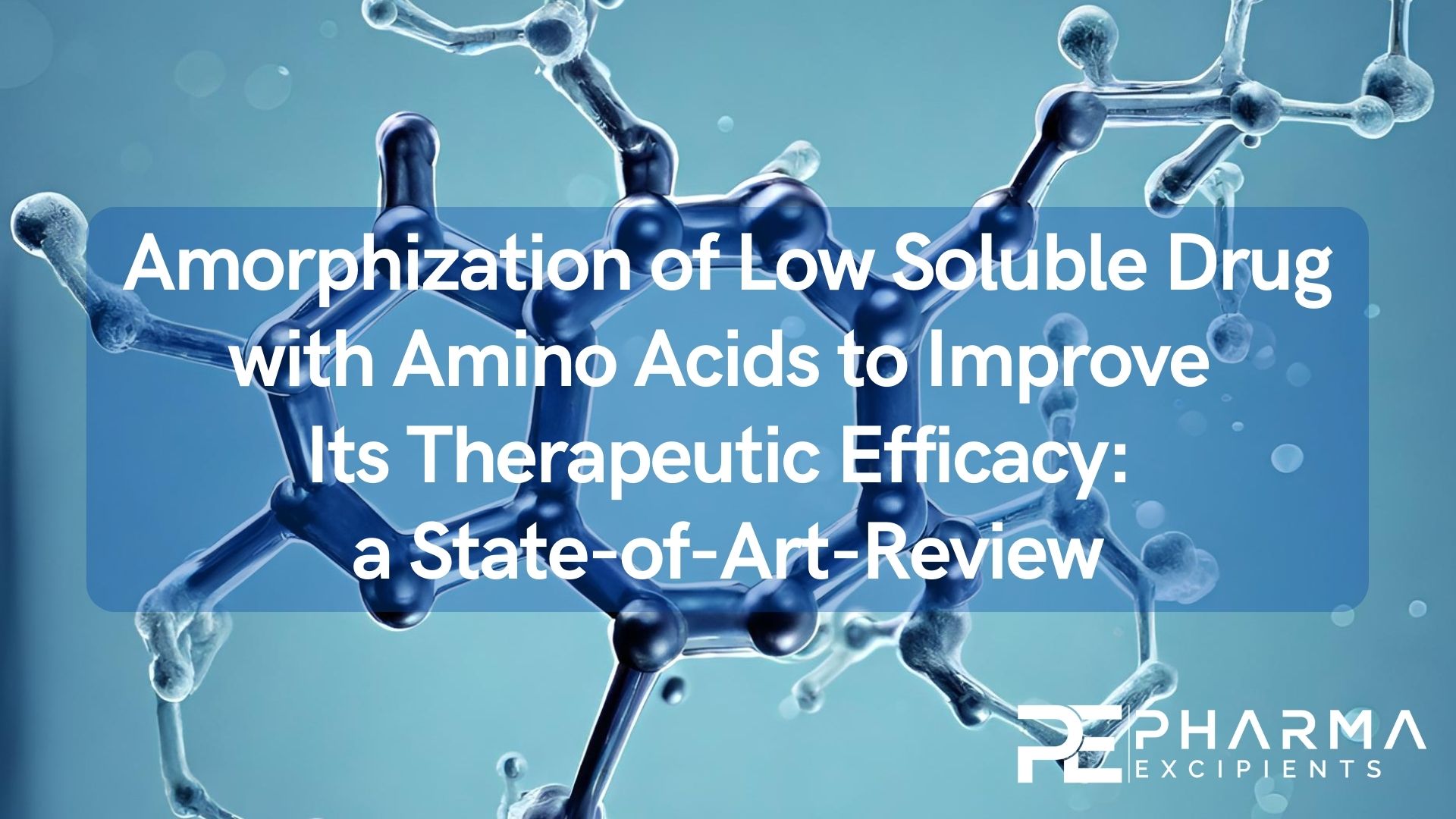Amorphization of Low Soluble Drug with Amino Acids to Improve Its Therapeutic Efficacy: a State-of-Art-Review

Low aqueous solubility of drug candidates is an ongoing challenge and pharmaceutical manufacturers pay close attention to amorphization (AMORP) technology to improve the solubility of drugs that dissolve poorly. Amorphous drug typically exhibits much higher apparent solubility than their crystalline form due to high energy state that enable them to produce a supersaturated state in the gastrointestinal tract and thereby improve bioavailability. The stability and augmented solubility in co-amorphous (COA) formulations is influenced by molecular interactions. COA are excellent carriers-based drug delivery systems for biopharmaceutical classification system (BCS) class II and class IV drugs. The three important critical quality attributes, such as co-formability, physical stability, and dissolution performance, are necessary to illustrate the COA systems.
New amorphous-stabilized carriers-based fabrication techniques that improve drug loading and degree of AMORP have been the focus of emerging AMORP technology. Numerous low-molecular-weight compounds, particularly amino acids such as glutamic acid, arginine, isoleucine, leucine, valine, alanine, glycine, etc., have been employed as potential co-formers. The review focus on the prevailing drug AMORP strategies used in pharmaceutical research, including in situ AMORP, COA systems, and mesoporous particle-based methods. Moreover, brief characterization techniques and the application of the different amino acids in stabilization and solubility improvements have been related.
Read more here
Kapoor, D.U., Singh, S., Sharma, P. et al. Amorphization of Low Soluble Drug with Amino Acids to Improve Its Therapeutic Efficacy: a State-of-Art-Review. AAPS PharmSciTech 24, 253 (2023). https://doi.org/10.1208/s12249-023-02709-2
Read more on “Amino Acids” here:
- A technical note: Characterization and evaluation of novel, ready to use coprocessed excipient in nutraceutical herbal vitamin and amino acid formulations
- isodel PAA – PMC Isochem as CDMO for PolyAmino Acids


